Abstract
Proline-requiring mutants of Saccharomyces cerevisiae were isolated. Each mutation is recessive and is inherited as expected for a single nuclear gene. Three complementation groups cold be defined which are believed to correspond to mutations in the three genes (pro1, pro2, and pro3) coding for the three enzymes of the pathway. Mutants defective in the pro1 and pro2 genes can be satisfied by arginine or ornithine as well as proline. This suggests that the blocks are in steps leading to glutamate semialdehyde, either in glutamyl kinase or glutamyl phosphate reductase. A pro3 mutant has been shown by enzyme assay to be deficient in delta 1-pyrroline-5-carboxylate reductase which converts pyrroline-5-carboxylate to proline. A unique feature of yeast proline auxotrophs is their failure to grown on the rich medium, yeast extract-peptone-glucose. This failure is not understood at present, although it accounts for the absence of proline auxotrophs in previous screening for amino acid auxotrophy.
Full text
PDF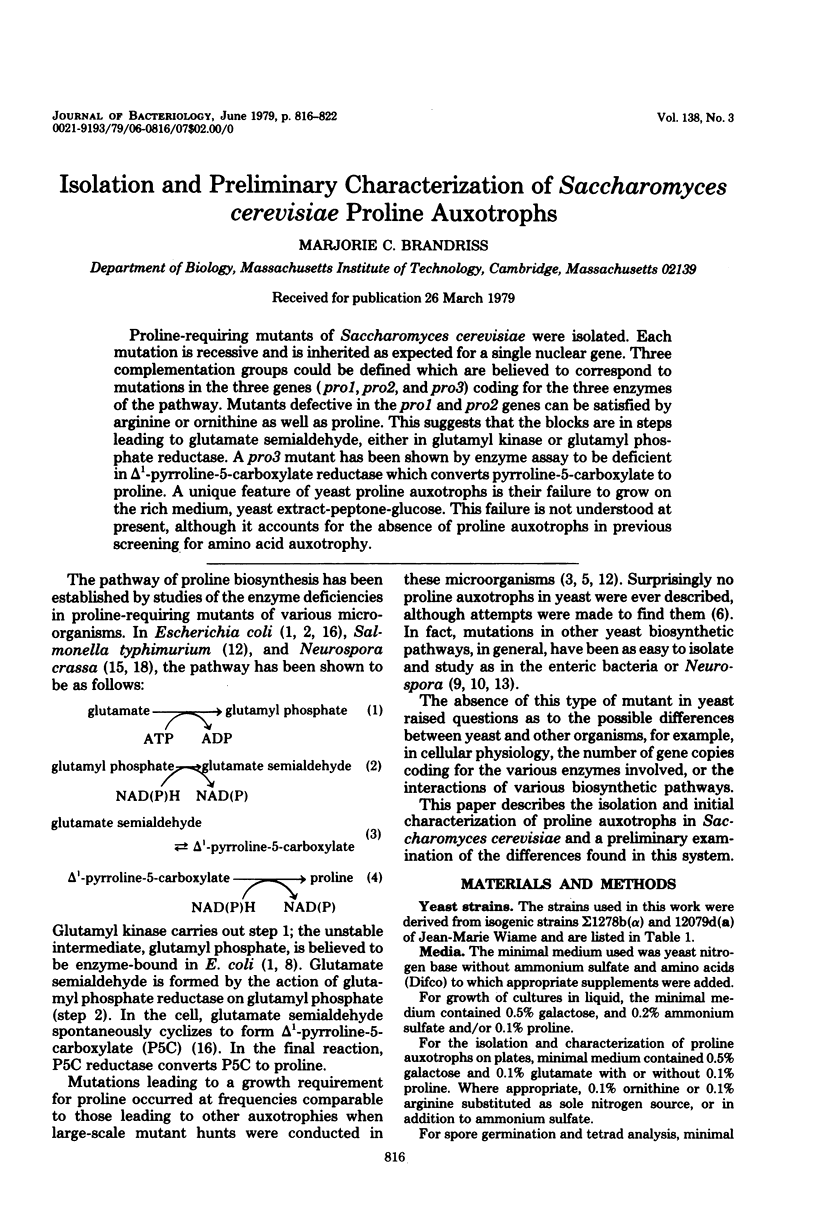
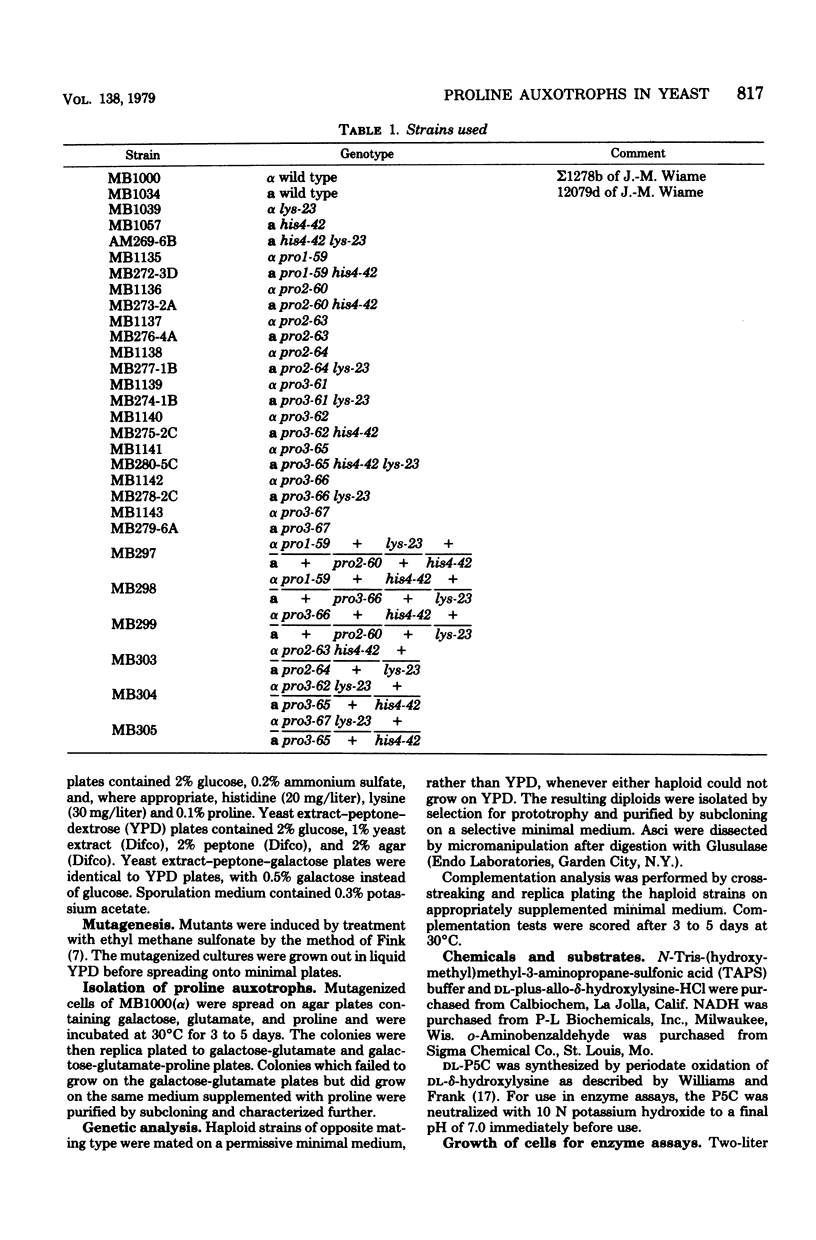
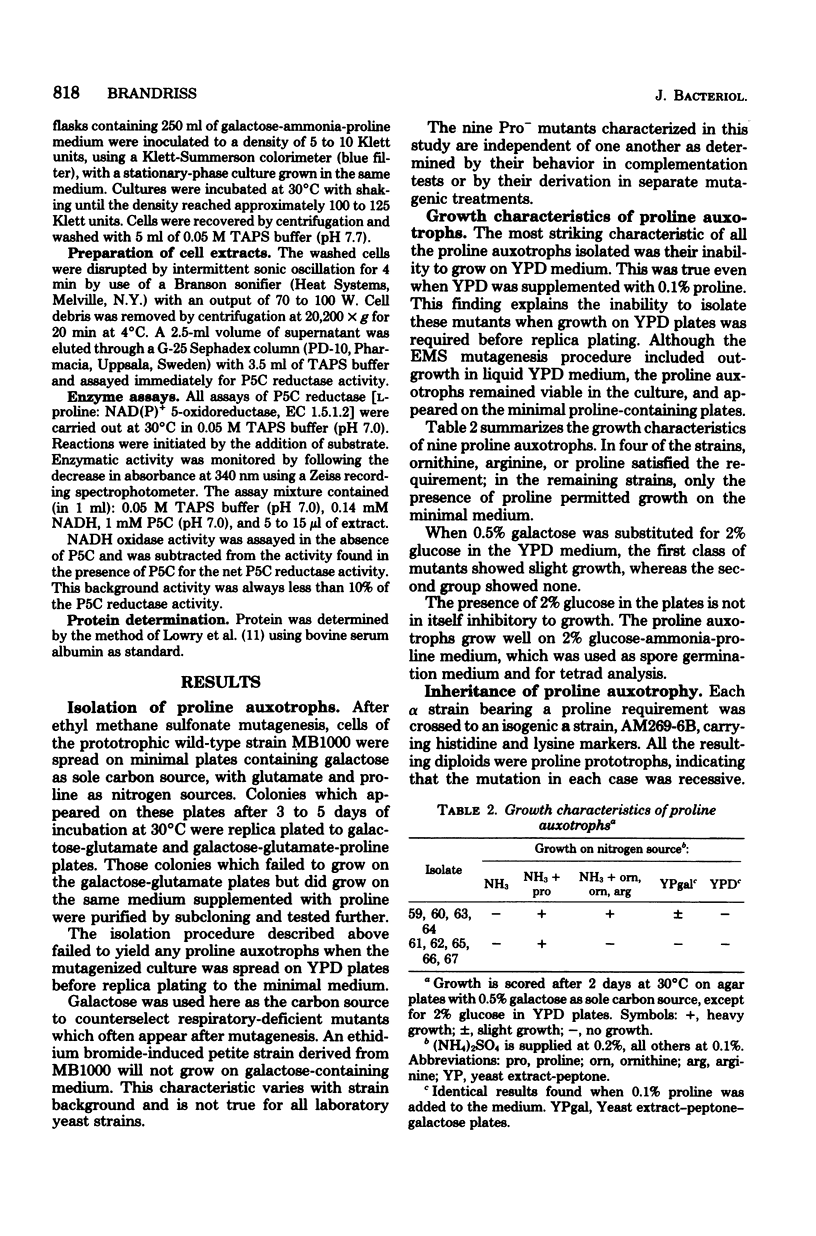
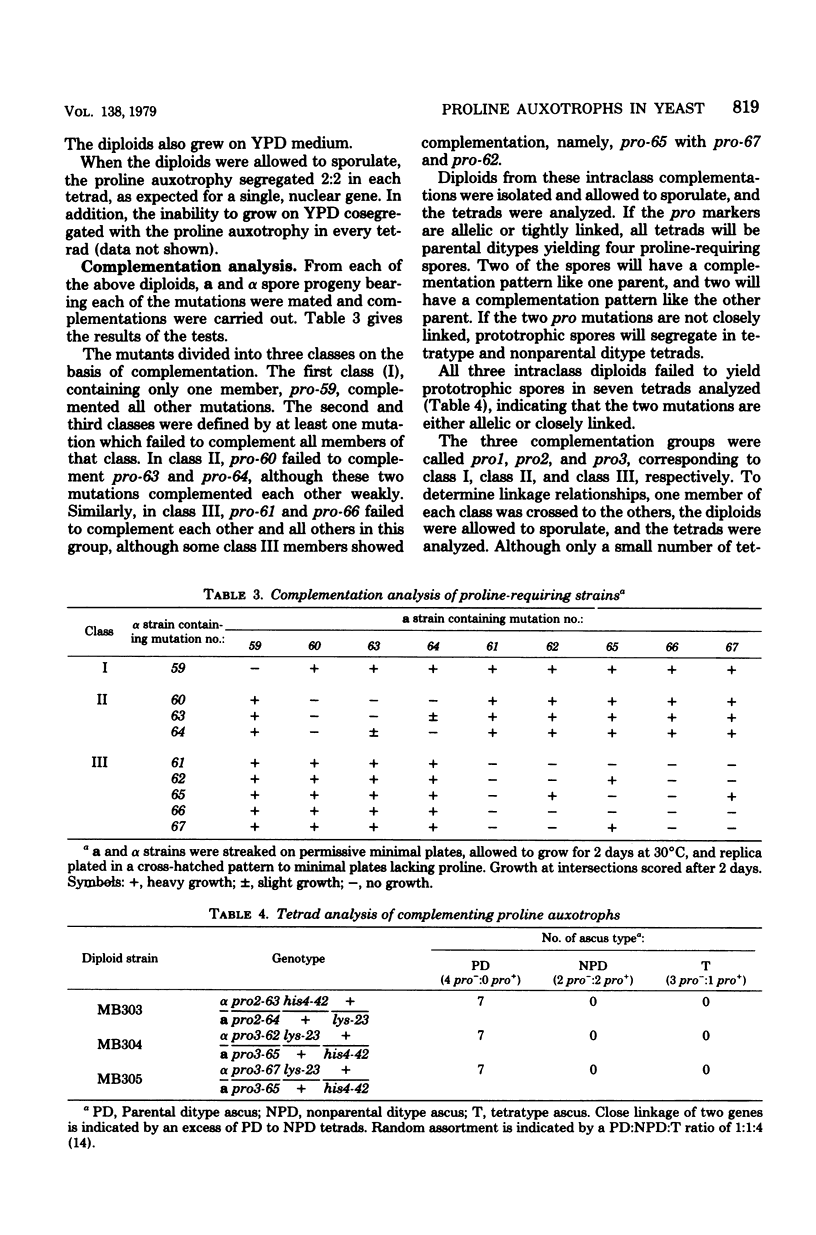
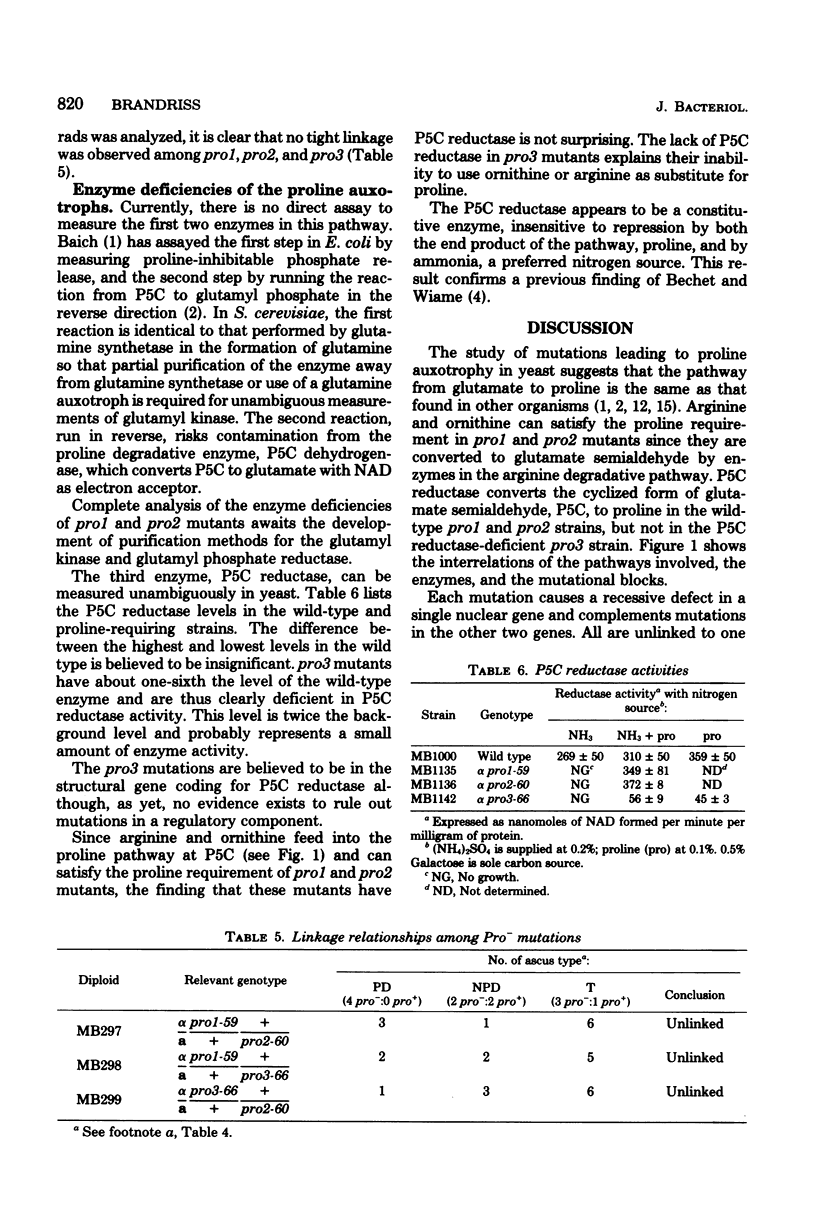
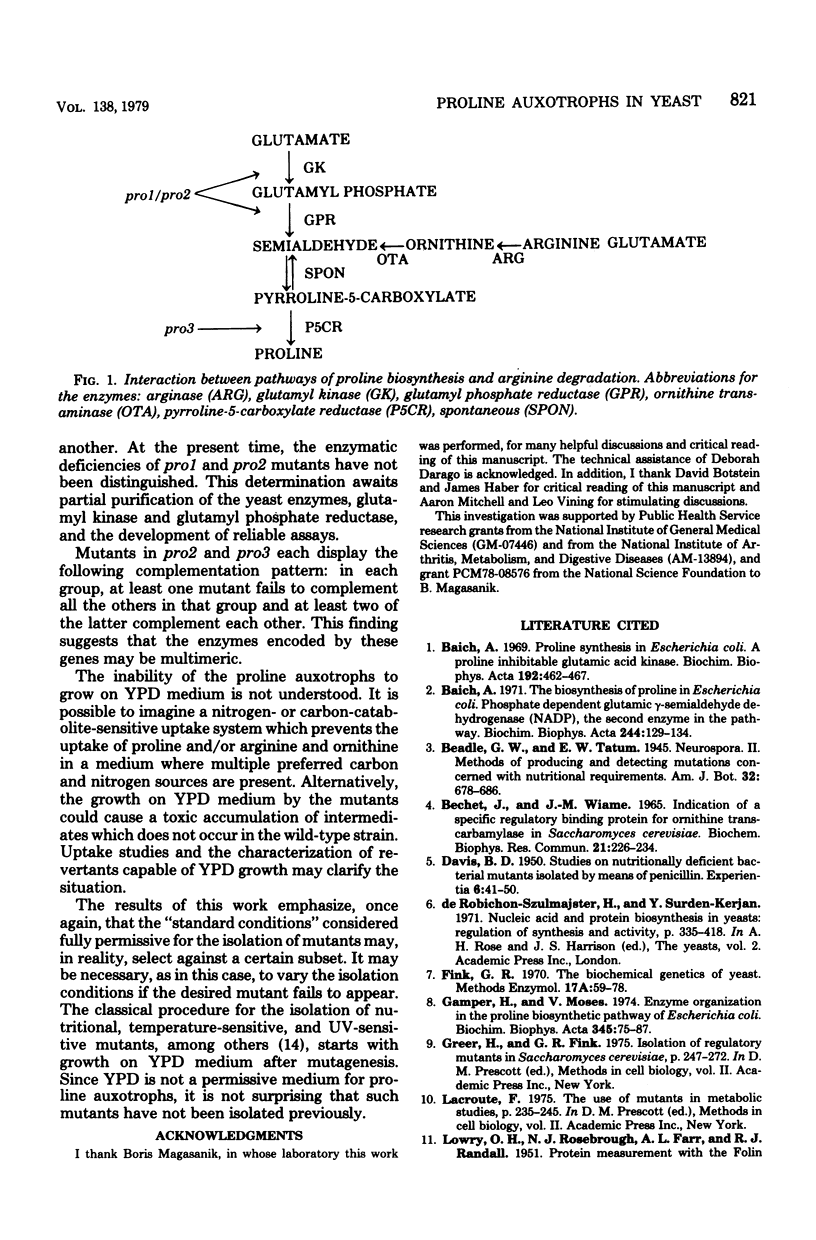
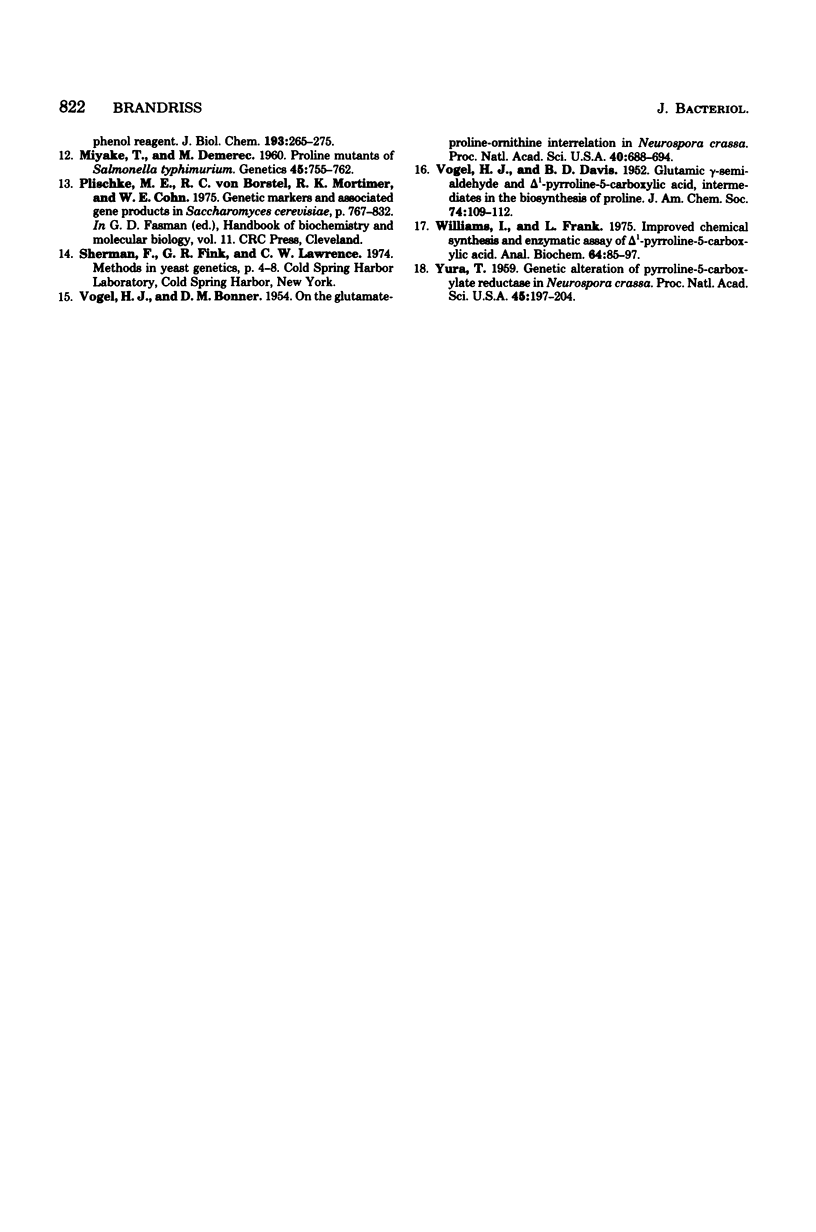
Selected References
These references are in PubMed. This may not be the complete list of references from this article.
- Baich A. Proline synthesis in Escherichia coli. A proline-inhibitable glutamic acid kinase. Biochim Biophys Acta. 1969 Dec 30;192(3):462–467. doi: 10.1016/0304-4165(69)90395-x. [DOI] [PubMed] [Google Scholar]
- Baich A. The biosynthesis of proline in Escherichia coli: phosphate-dependent glutamate -semialdehyde dehydrogenase (NADP), the second enzyme in the pathway. Biochim Biophys Acta. 1971 Jul 20;244(1):129–134. doi: 10.1016/0304-4165(71)90129-2. [DOI] [PubMed] [Google Scholar]
- Bechet J., Wiame J. M. Indication of a specific regulatory binding protein for ornithinetranscarbamylase in Saccharomyces cerevisiae. Biochem Biophys Res Commun. 1965 Nov 8;21(3):226–234. doi: 10.1016/0006-291x(65)90276-7. [DOI] [PubMed] [Google Scholar]
- Gamper H., Moses V. Enzyme organization in the proline biosynthetic pathway of Escherichia coli. Biochim Biophys Acta. 1974 Jun 20;354(1):75–87. doi: 10.1016/0304-4165(74)90055-5. [DOI] [PubMed] [Google Scholar]
- Greer H., Fink G. R. Isolation of regulatory mutants in Saccharomyces cerevisiae. Methods Cell Biol. 1975;11:247–272. doi: 10.1016/s0091-679x(08)60327-1. [DOI] [PubMed] [Google Scholar]
- LOWRY O. H., ROSEBROUGH N. J., FARR A. L., RANDALL R. J. Protein measurement with the Folin phenol reagent. J Biol Chem. 1951 Nov;193(1):265–275. [PubMed] [Google Scholar]
- Lacroute F. The use of mutants in metabolic studies. Methods Cell Biol. 1975;11:235–245. doi: 10.1016/s0091-679x(08)60326-x. [DOI] [PubMed] [Google Scholar]
- Miyake T, Demerec M. Proline Mutants of Salmonella Typhimurium. Genetics. 1960 Jun;45(6):755–762. doi: 10.1093/genetics/45.6.755. [DOI] [PMC free article] [PubMed] [Google Scholar]
- Vogel H. J., Bonner D. M. ON THE GLUTAMATE-PROLINE-ORNITHINE INTERRELATION IN NEUROSPORA CRASSA. Proc Natl Acad Sci U S A. 1954 Aug;40(8):688–694. doi: 10.1073/pnas.40.8.688. [DOI] [PMC free article] [PubMed] [Google Scholar]
- Williams I., Frank L. Improved chemical synthesis and enzymatic assay of delta-1-pyrroline-5-carboxylic acid. Anal Biochem. 1975 Mar;64(1):85–97. doi: 10.1016/0003-2697(75)90408-x. [DOI] [PubMed] [Google Scholar]
- Yura T. GENETIC ALTERATION OF PYRROLINE-5-CARBOXYLATE REDUCTASE IN NEUROSPORA CRASSA. Proc Natl Acad Sci U S A. 1959 Feb;45(2):197–204. doi: 10.1073/pnas.45.2.197. [DOI] [PMC free article] [PubMed] [Google Scholar]


